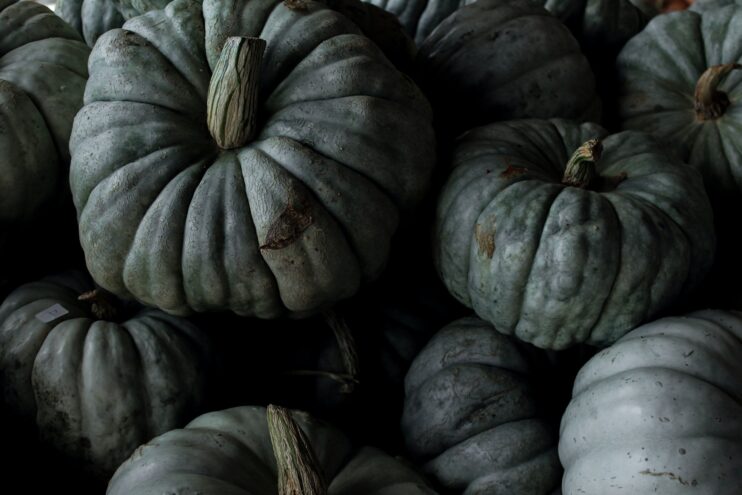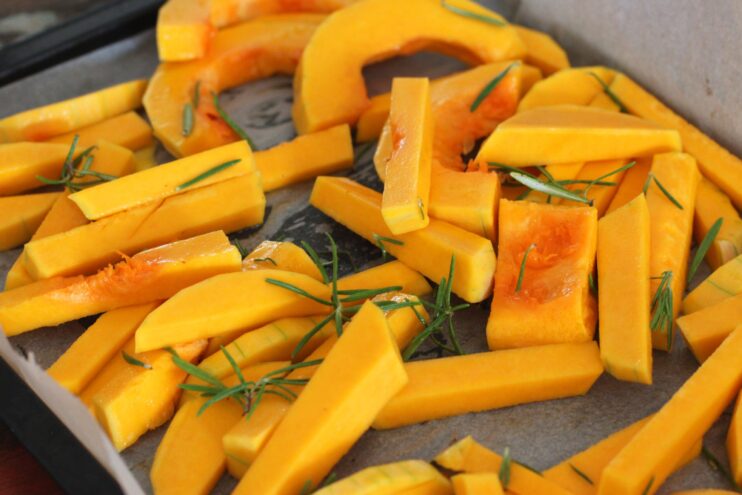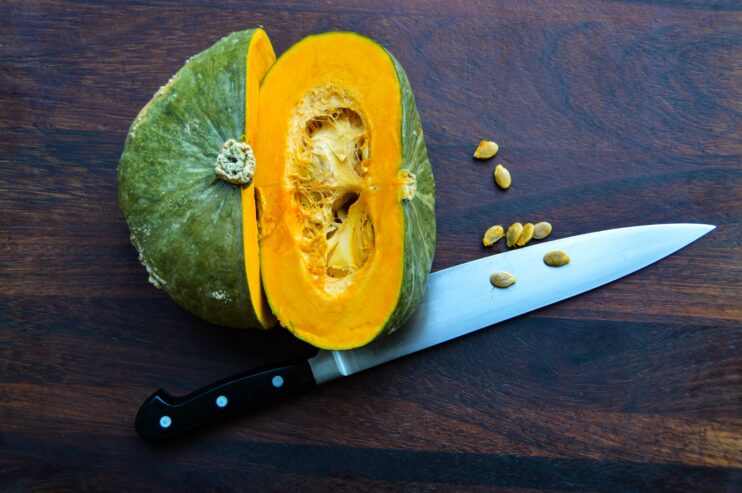We use affiliate links. If you purchase something using one of these links, we may receive compensation or commission.
You have successfully planted acorn squash in your garden but, you don’t know what to do when it’s ripe.
So, here is everything you need to know about acorn squash during and after maturity.
In this article, we will be covering when acorn squash ripes, how to pick and store them, and also how to cook them.
Table of Contents
About acorn squash
Mostly found in Mexico and Central America, acorn squash is biologically a fruit that is best known for its hard-to-cut skin and drier flesh. Its origin is believed to be from Mexico. Later, its popularity increased across North America because of the storage potential of its seeds.
Acorn squash has a mild honey taste with a creamy and fibrous texture. Based on their physical appearance, there are golden, green, and white acorn squashes.
When is acorn squash ripe?
Acorn squash becomes ready to be harvested between September to October. But, how do you know when is acorn squash ripe?
One of the easiest ways of knowing if the acorn is ripe or not is by noticing its color. A ripped squash gets dark green in color while losing its initial glossy appearance. The skin of the fruit becomes hard and the ground touching the squash will turn orange from yellow.
You can also observe the plant’s stem attached to the fruit. The stem shrivels, shrinks, and becomes brown once the fruit is ripped. This method is quite troublesome to many farmers as the fruit may sometimes be over ripped.
How to harvest acorn squash?

So, you have determined that your acorn squash is ripe. Now, it is time for picking them up.
Acorn squash will be ready for harvesting in just about 50-55 days after the fruit is set. Be careful not to harvest the fruit too soon. Harvesting the fruit soon forces the seed to get the nutrient from flesh instead of a vine.
Picking acorn squash early causes declination of storage potential of this fruit and also the taste or flavor of this fruit becomes bad.
So, harvesting acorn squash at right time is important. Let’s discuss how to pick them.
You need to harvest acorn squash before the hard frosts as they are prone to frost damage. You should cut the fruit from the vine by leaving about 4 to 6 inches attached to the fruit. This helps to preserve the moisture and avoid unwanted mold or pathogens entering the fruit.
After you have separated the squash from the plant, handle it carefully by the fruit itself. Do not carry the fruit with its attached stem part.
How to store and care acorn squash?
Like I said earlier, the acorn squash became popular for its storage potential. So, if you provide a suitable condition, they can be stored for about 2-4 months.
Let’s look at some of the tips on how you can store and care for acorn squash:
- Just after harvest, the sun cure for about 5-7 days with a temperature above 50 degrees of Fahrenheit.
- Pack acorn squash so that they do not touch each other or any hard surfaces. You can wrap them individually in cloth, paper, or plastic.
- If you want to store the squash for a short period of time, you can cook the squash and freeze it.
- If you find any damaged squash while storing, remove them and consume them soon if they are edible
Today is your lucky day. Here are some bonus tips to store and cure acorn squash:
- You do not want to fluctuate the temperature while storing. Keep the storage temperature even.
- Keep the storage area dry and well-ventilated.
- While storing, try not to pile the squashes on top of one another. You may put them making different layers.
Benefits of acorn squash
This fruit is a highly nutritious carb and is packed with lots of vitamins including iron, potassium, and manganese which are important for good health.
If you are asking me what are the best winter diet fruits, well you are reading about one of them. Low-calorie and fewer sugars are what make this fruit good for weight loss.
If you are looking for weight loss, strawberries could be a great addition to your diet. You can check our content on How long does Strawberries takes to grow?
Acorn squash contains antioxidants that help people fight against health issues like heart diseases, stroke, high blood pressure, and cancers.
Acorn squash recipe

If you are a meat lover, try acorn squash with roast chicken, turkey, or even ham. You can try the mix of spinach, broccoli, apples, or potatoes if you are vegetarian.
For someone like me who loves sweetness, try acorn squash with maple syrup and honey. Believe me, you would love this.
Roasting acorn squash is quite simple. First, cut the squash in half and remove all the seeds. You can use a spoon to remove the seeds. Then, roast it at about 400 degrees for an hour. Use a fork to easily pierce and shred the squash.
You can also consume the skin of acorn squash. In fact, the skin of the squash is really tasty. After roasting this fruit, the skin becomes soft and becomes edible.
Conclusion
In this article, we have discussed when is acorn squash ripe, how to harvest acorn squash, ways of storing it, and the recipe for acorn squash.
In between September to October, acorn squash becomes ripe and ready to harvest. You can tell if the squash is ripe or not through its color and the stem.
Acorn squash is very healthy and can be stored for the long term. Try the acorn squash with the sweet flavor that I recommend in the recipe section.
Image Credit: Unsplash.com

